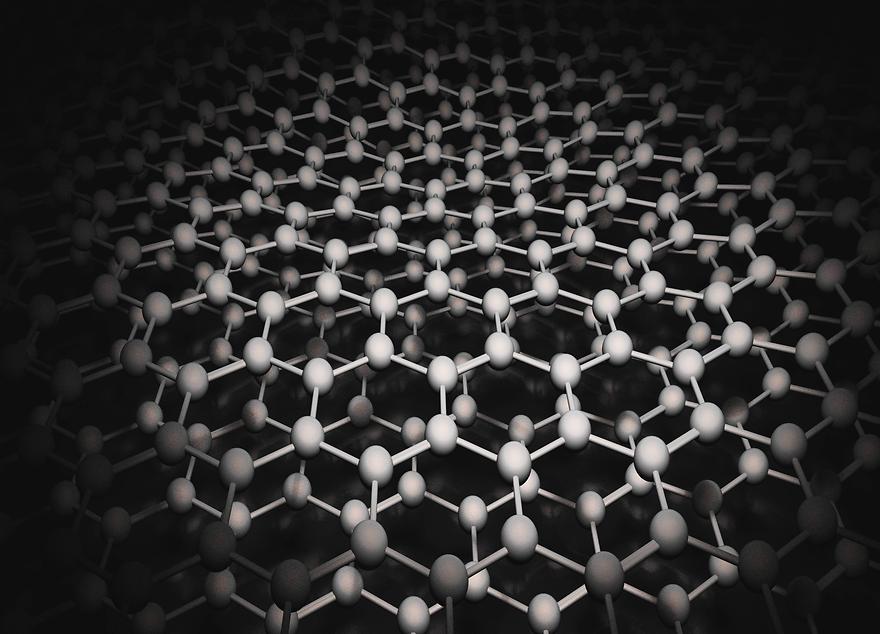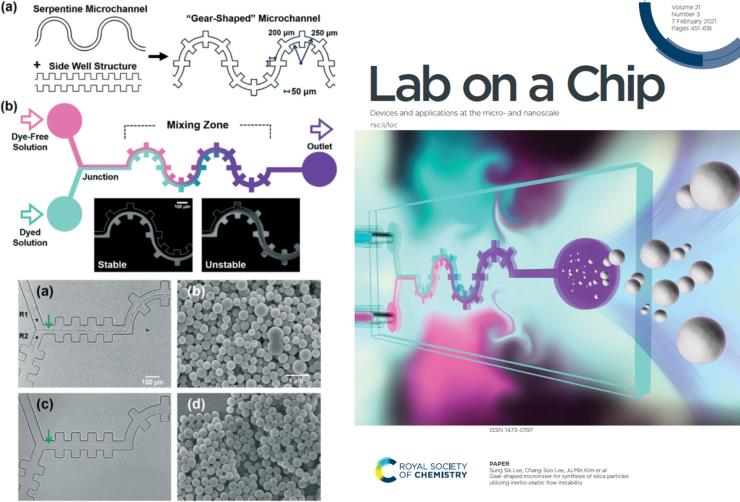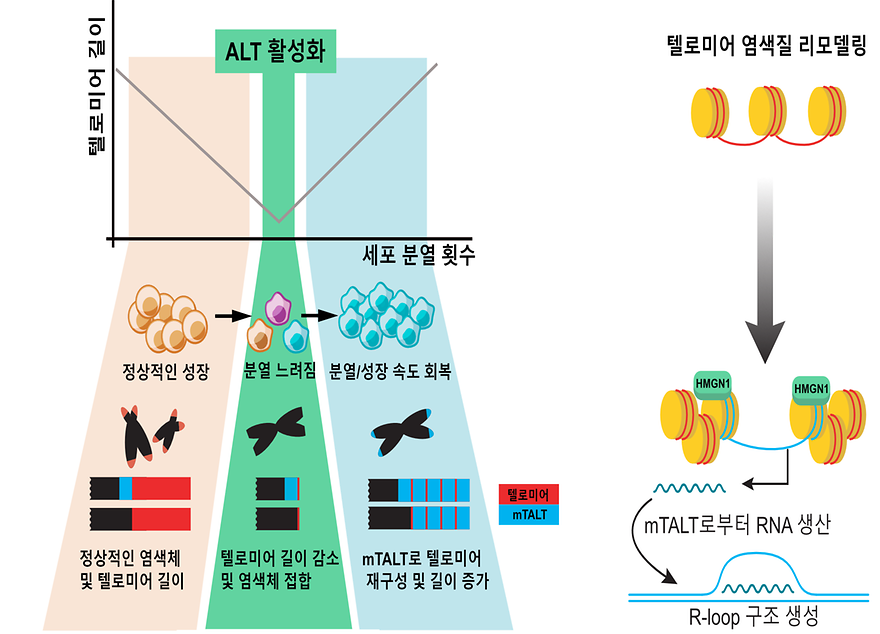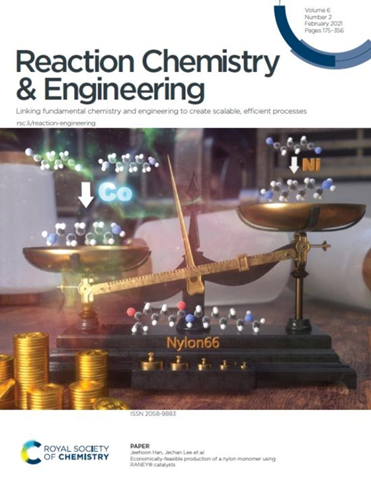-
One’s Trash Another’s Treasure—Converting Waste Tea Bags into Useful Chemicals with HeatScientists show how catalyst-assisted pyrolysis can convert used up tea bags into valuable compoundsSome types of waste, such as used tea bags, cannot be recycled nor composted, which means they can only be dealt with via incineration or landfilling. In an effort to find a more ecofriendly alternative, scientists from Ajou University, Korea, explored ways to improve a thermochemical process called pyrolysis to upconvert teabags into value-added compounds. Their results showcase the potential of pyrolysis as an efficient waste management technique. Tea bags usually contain non-compostable materials and have to be disposed of via landfilling or incineration, which are detrimental to the environmentPhoto courtesy: ShutterstockThe shocking amount of waste that humans produce from everyday consumables is taking a serious toll on the environment, so it is no surprise that much effort is being spent on waste management strategies such as recycling and composting. However, some types of waste are a bit trickier to deal with because they contain both compostable and non-compostable materials. Tea bags, made from organic matter and plastic, are a perfect example of such waste, as they can only be disposed of via landfill or incineration—two options that aren’t particularly ecofriendly. Considering that about 6 million tons of tea is consumed yearly across the world, the environmental impact of the second most-consumed beverage is a matter of serious concern.Fortunately, many research groups are working on developing techniques to properly deal with such kinds of waste. Pyrolysis, a thermochemical process that uses temperature to break down molecules, is one promising way in which we could convert food waste (among other types) into useful compounds, such as liquid fuels and char. In a recent study published in Chemical Engineering Journal, scientists from Ajou University, Korea, investigated how pyrolysis processes could be improved for waste tea bags by using an aluminum-based material known as HZSM-11 (a less studied yet highly effective catalyst). They also studied the differences between conducting pyrolysis in a carbon dioxide (CO2) atmosphere versus a more commonly used nitrogen (N2) one.The scientists purchased local tea bags, used them to brew tea, and dried them prior to pyrolysis. After analyzing the composition of the tea bags in detail, they conducted pyrolysis under a variety of conditions, revealing that waste tea bags can be upcycled into different chemicals with added value. “We found that pyrolysis using HZSM-11 as a catalyst in CO2 produced a significantly higher amount of caprolactam, a commodity chemical used in the production of nylon. Moreover, this process produced higher amounts of char, a solid fuel with an energy content equivalent to that of coal,” explains Dr. Jechan Lee, who led the study. Additionally, the use of CO2 also hindered the production of certain pollutants like phenolics and polycyclic hydrocarbons. To top things off, conducting pyrolysis in CO2 also means that we are putting an otherwise undesirable greenhouse gas to good use.It is critical that we further enhance pyrolysis processes so that we can gradually abandon the practices of incineration and landfilling. Excited about the positive results of the study, Dr. Lee remarks, “Our results suggest that pyrolysis is the most likely process to be adopted for the upcycling of everyday waste into fuels and value-added commodities. For instance, we might be able to produce plastic materials from renewable chemicals derived from everyday waste instead of petroleum.”When speaking of waste management, it appears that pyrolysis may soon become our cup of tea!ReferenceAuthors:Soosan Kim1, Nahyeon Lee2, Sung Woo Lee3, Yong Tae Kim3*, and Jechan Lee1,2*Title of original paper:Upcycling of waste teabags via catalytic pyrolysis in carbon dioxide over HZSM-11Journal:Chemical Engineering JournalDOI:10.1016/j.cej.2021.128626Affiliations:1Department of Environmental Engineering, Ajou University 2Department of Energy Systems Research, Ajou University3C1 Gas & Carbon Convergent Research Center, Korea Research Institute of Chemical Technology*Corresponding authors’ emails: ytkim@krict.re.kr (Y.T. Kim), jlee83@ajou.ac.kr (J. Lee)About Associate Professor Jechan LeeJechan Lee received a PhD in chemical engineering from the University of Wisconsin–Madison in 2015 and an MS degree in environmental engineering at Columbia University in 2010. After his PhD, he worked as a postdoctoral researcher at the Catalysis Center for Energy Innovation at the University of Delaware (2015–2016) and Sejong University (2016–2018). He has been a faculty member of the Environmental and Safety Engineering Department at Ajou University since 2018. He is currently an Associate Professor of Environmental and Safety Engineering and Energy Systems Research at Ajou University. His research interests are in the areas of catalysis, biorefinery, CO2 utilization, waste upcycling, and waste-to-energy/resources. He has authored more than 160 peer-reviewed SCI(E) papers.
-
35
- 작성자국제협력팀
- 작성일2021-05-10
- 9701
- 동영상동영상
-
Modifying the angle of “twist” between layers in a bilayer graphene enhances its optical response While conventional, single-layer graphene attracts tremendous attention in material science, double-layer graphene has its own appeal due to its peculiarities. In a new study, scientists from Ajou University, Korea report and explore the cause of a remarkable 60-fold enhanced optical response in a “twisted” bilayer graphene for an optimum orientation of the layers, paving the way for nonlinear optic applications for efficient ultrafast signal processing and developing novel quantum light sources. By changing the angle between the layers of a “twisted” double-layer graphene, scientists observed an enhancement in its optical response that depended strongly on the rotation angle. The property can help create quantum light sources with novel applications. Photo courtesy: ShutterstockFew materials today enjoy the kind of popularity and attention in material science that graphene does. Given its unusual properties, graphene has found a multitude of applications including drug delivery, electronics, energy storage, and ultra-sensitive sensor technology. Graphene is essentially a single layer of carbon atoms arranged hexagonally, giving it the moniker “monolayer” graphene (MLG). However, graphene can also exist in multiple layers; “bi-layer” graphene in particular is known for its unique peculiarities. Scientists from Ajou University, Korea recently explored the optical properties of a peculiar structure called “twisted bilayer graphene” (tBLG), in which two MLGs are stacked on one another at different orientations and discovered that the rotation angle between the layers play a crucial role in enhancing how photons (light particles) interact with the structure to produce higher-energy photons, a phenomenon called “nonlinear optical response.” “Recently, there have been exciting reports about tBLG due to its unique inter-layer interaction absent in MLG. This got me excited about studying a nonlinear optical property of tBLG called “third-harmonic generation” (THG), in which input photons generate output photons three times their energy,” explains Prof. Dong-Il Yeom who led the study, which was published in Light: Science & Applications. The scientists excited the sample with pulsed, infrared laser light, inducing enhanced THG signals whose intensity varied with the “twist angle” and became as high as 60 times for an angle of 12°! Raman measurements and structure calculations revealed an interesting peculiarity in the electronic states called “van Hove Singularity,” which depends on the twist angle, and causes the enhanced THG signal when its energy gap coincides with the energy of three photons of the incident light.Prof. Yeom suggests potential novel applications of the phenomenon. “I think our work could be potentially useful in creating a quantum entangled light source based on nonlinear optics, with applications in quantum sensing or quantum communication for defense and security purposes,” he speculates. Graphene with a ‘twist’ thus holds many promises for a brighter future!ReferenceAuthors:Seongju Ha1, Nam Hun Park1,2, Hyeonkyeong Kim1, Jiseon Shin3, Jungseok Choi1, Sungmin Park1, Ji-Yun Moon1, Kwanbyung Chae1, Jeil Jung3,4, Jae-Hyun Lee1,5, Youngdong Yoo6, Ji-Yong Park1,7, Kwang Jun Ahn1 and Dong-Il Yeom1,7Title of original paper:Enhanced third-harmonic generation by manipulating the twist angle of bilayer graphene Journal:Light: Science & Applications DOI:10.1038/s41377-020-00459-5 Affiliations:1Department of Energy Systems Research, Ajou University 2Korea Research Institute of Standards and Science3Department of Physics, University of Seoul4Department of Smart Cities, University of Seoul5Department of Materials Science and Engineering, Ajou University6Department of Chemistry, Ajou University7Department of Physics, Ajou University *Corresponding author’s email: diyeom@ajou.ac.kr About Ajou UniversityFounded in 1973, Ajou University has quickly grown to become one of the top universities in the Republic of Korea. With over 15,000 students and 50 research centers in diverse fields, Ajou University partakes in the largest national research and graduate education project funded by the Korean Ministry of Education. In line with its recently reformed vision, Ajou University’s goal is to change society by connecting minds and carrying out high-impact research to improve the welfare of people in and outside Korea. Website: https://www.ajou.ac.kr/en/index.do About the authorDong-Il Yeom is a Professor of the Department of Physics and Department of Energy Systems Research at Ajou University. He received his Ph.D. in 2005 in Physics (Optics) from Korea Advanced Institute of Science and Technology (KAIST). Before joining Ajou University in 2008, he worked as a research staff at the University of Sydney for two years. His group is developing fiber lasers and related optical systems for military applications. He also studies the optical properties of 2-dimensional materials and their application to photonic and optoelectronic devices.
-
33
- 작성자국제협력팀
- 작성일2021-04-19
- 7979
- 동영상동영상
-
A team of researchers from multiple organizations, led by Prof. Kim Ju-min (Departments of Chemical Engineering and Energy Systems Research) and his team, has developed a microscale flow mixing technique capable of synthesizing more even nanoparticles. The researchers expect their latest discovery to have a wide range of applications, including medical diagnostics, as well as preprocessing of specimens and reaction-based processes in microfluidics. Prof. Kim’s team worked with two other teams, led by Prof. Lee Chang-soo of Chungnam National University and Dr. Lee Sung-sik of ETH Zürich, respectively, to produce a microscale reactor. Their findings were published in a paper entitled, “Gear-shaped micromixer for synthesis of silica particles utilizing inertio-elastic flow instability,” featured on the cover of the February 7 issue of Lab on a Chip. Profs. Kim and Lee and Dr. Lee participated as corresponding co-authors. Hong Sun-ok, a recent graduate of Ajou University with a doctorate in energy systems research and now affiliated with Lotte Chemical, was listed as first author. Microfluidics is increasingly used in a number of applied fields, most notably for engineering point-of-care diagnostic devices that provide fast diagnosis. Efficient mixing of fluids is a crucial prerequisite for the preprocessing and core reactions of specimens in microfluidics. It is also the key performance requirement of micromixers. Given the near impossibility of generating turbulence in micromixers, the inefficient expansion-based mixing method has been preferred thus far. Manual mixing, which relies on conventional fluid dynamics, requires fluid channels with complex designs and complex manufacturing processes. Moreover, as layer-based mixing requires normal-state flows of fluid, the mixed output is prone to sedimentation along the fluid surface. Prof. Kim and the researchers discovered that flow instability, associated with diluted polymeric solutions, increases greatly in serpentine microscale channels that repeatedly contract and expand. They decided to apply this discovery to the development of a new micromixer with significantly greater efficiency. The inertio-elastic micromixer that came out of this discovery offers greater mixing efficiency at a wider range of flow rates. In other words, it is capable of more efficiently mixing a wider variety of fluid materials with greater simplicity. The researchers expect that their new model can be more easily applied to large-capacity micromixers. The researchers indeed applied their new micromixer to the synthesization of silica nanoparticles and confirmed that it was capable of producing particles of a more uniform size distribution (as measured in terms of distribution of particles of different sizes in a given specimen). They also demonstrated that their mixer was able to produce nanoparticles over a long span of time without the fluid channel becoming blocked—a problem common with conventional mixers. Prof. Kim explained: “Our study demonstrates that it is possible to design a micromixer capable of maximizing flow instability of viscoelastic fluids like polymer solutions. Our study is also significant because it demonstrates our technique by applying it to the synthesis of actual nanoparticles with a uniform size distribution.” This research has been made possible in part with support from the National Research Foundation of Korea’s Advanced Center of Excellence and personal research grants.# Captions* Upper left: The serpentine channel developed by Prof. Kim’s team, and a conceptual diagram of how it increases inertio-elastic flow instability to facilitate mixing.* Lower left: Particles mixed in a Newtonian fluid (a) show size distribution with a wide variance and nonspherical shapes (b). Particles synthesized in a dilute polymer solution with the help of inertio-elastic flow instability (c) boast uniform sizes and spherical shapes (d).* Right: Cover of the February 2021 issue of Lab on a Chip featuring Prof. Kim’s study.[Source: https://doi.org/10.1039/D0LC00834F]
-
31
- 작성자OIA
- 작성일2021-03-19
- 10142
- 동영상동영상
-
A team of researchers from Ajou and Seoul National universities has discovered a new way to control the pace of cellular aging. The key anti-aging solution found consists in the reconfiguration of telomeres, often understood as “timers” of cell division, which promises to unlock the secret of aging. The findings of the latest research were published under the title, “Telomeres reforged with non-telomeric sequences in mouse embryonic stem cells” in the February 17 issue of Nature Communications, a prestigious publication on natural sciences, with Prof. Park Dae-chan (Departments of Biological Sciences and Molecular Science and Technology) from Ajou University and Prof. Lee Jun-ho from Seoul National University listed as corresponding authors. Kim Da-eun, currently studying molecular science and technology at Ajou’s graduate school, was also listed as a co-author. The cells that make up the human body continue to divide and multiply to sustain the natural functions of life and growth. At some point in time, however, cells stop dividing, while some genetic information is lost as cells repeat division. Telomeres are protective sheaths found at the tips of chromosomes that serve as a kind of shield against the loss of genetic information during cell division, as telomeres are lost instead of vital genetic information. As telomeres shorten to a certain length or below, cells stop dividing and begin aging. Cells that continue to divide more actively than others, such as reproductive cells, stem cells, and cancer cells, utilize an enzyme known as telomerase to maintain the telomeric lengths and continue to divide almost infinitely. In other words, the continued healthy functioning of cells relies crucially on regulating the lengths of telomeres and the number of times cells divide. An accurate understanding of how telomeres can best be preserved may be essential to effective cancer treatment and anti-aging strategies with minimal or no risk of side effects. Researchers have discovered a mechanism known as alternative lengthening of telomeres (ALT) in certain cancer cells, which maintains telomeric length without utilizing telomerase enzymes. In human cancer cells, however, researchers have so far found telomeres that utilize the ALT mechanism but whose sequences simply follow the general and repetitive pattern.The researchers on Prof. Park’s team have discovered, for the first time in the world, a recombination of telomeres with unique sequences in a mammalian model. A small number of embryonic stem cells from a mouse with its telomerase inactivated went on to activate the ALT mechanism to recover the normal pace of cell division. The cells divided by this ALT mechanism displayed amplified unique sequences. Prof. Park’s team named the new pattern they discovered the mouse template for ALT (mTALT), arguing that it provided clues as to the possible existence of alternative telomeres in human cancer cells as well.The researchers, moreover, employed a multi-omics analysis to trace how the ALT mechanism actually works, subjecting the mouse embryonic stem cells at diverse stages of growth—cells with normal telomeric lengths, cells in the aging stage, cells after ALT activation, etc.—to analyses of genomes, transcriptomes, single-cell transcriptomes, and proteomes. They were thus able to identify and demonstrate the molecular characteristics of ALT cells.The researchers commented: “Our recent study reveals the possible existence of alternative telomeres in human cancer cells. We have demonstrated that the concept of telomeres extends beyond the repeated sequencing structures found at the tips of chromosomes and telomerase, but may also encompass diverse mechanisms that protect the tips of chromosomes.”The research was made possible with support from the Ministry of Science and ICT and the National Research Foundation of Korea’s support programs for new and experienced researchers.Mechanism of telomeric change and ALT activation due to cell division
-
29
- 작성자OIA
- 작성일2021-03-19
- 8508
- 동영상동영상
-
-
27
- 작성자OIA
- 작성일2021-03-19
- 7537
- 동영상동영상





